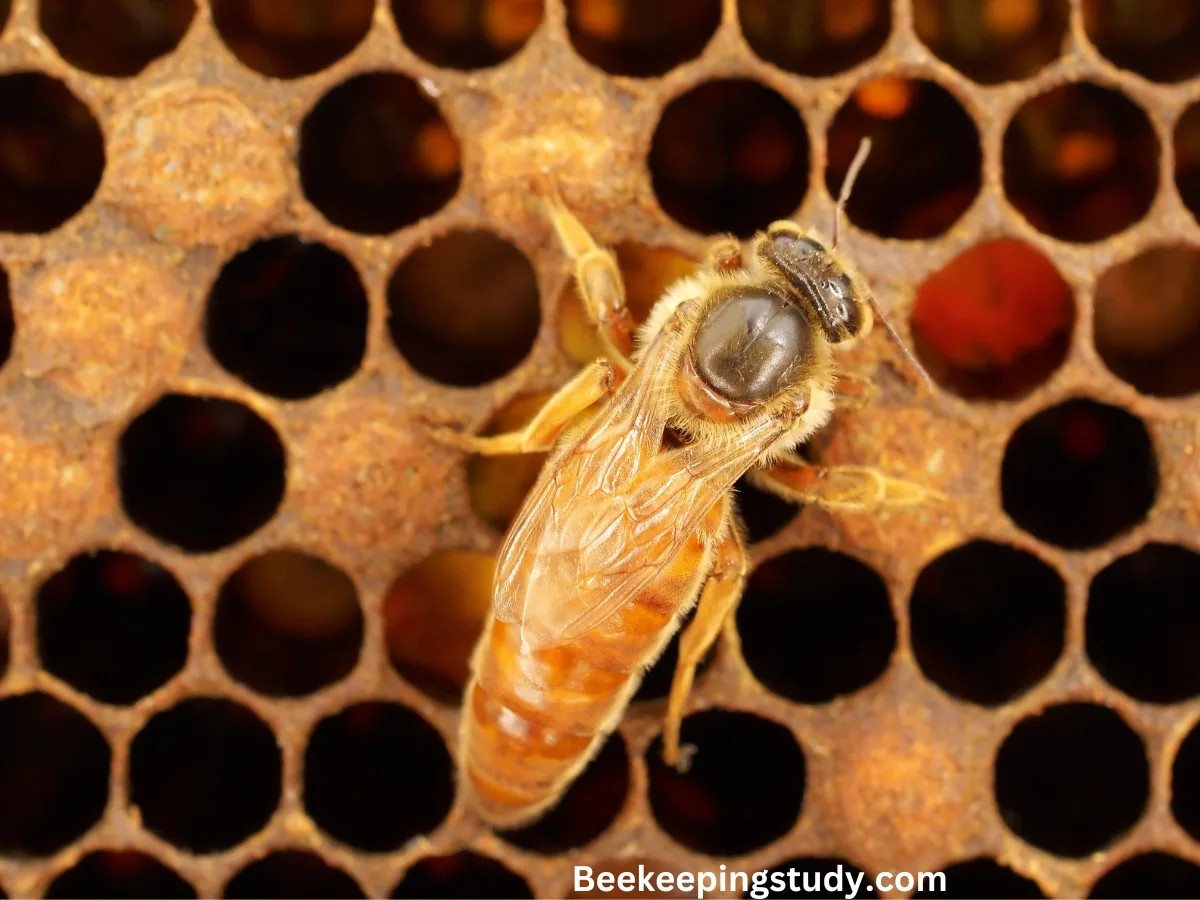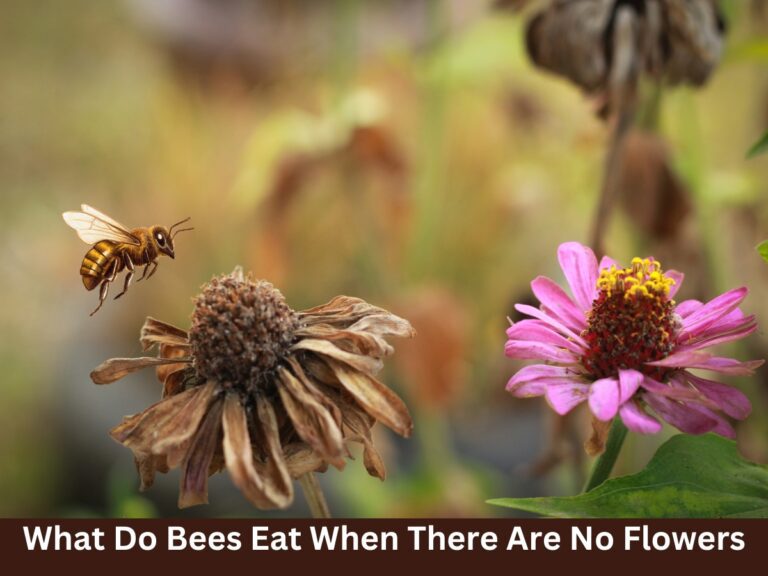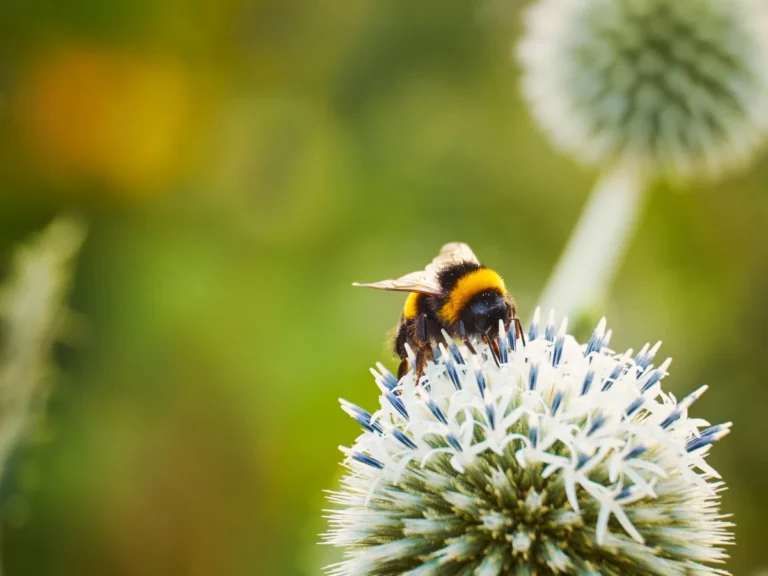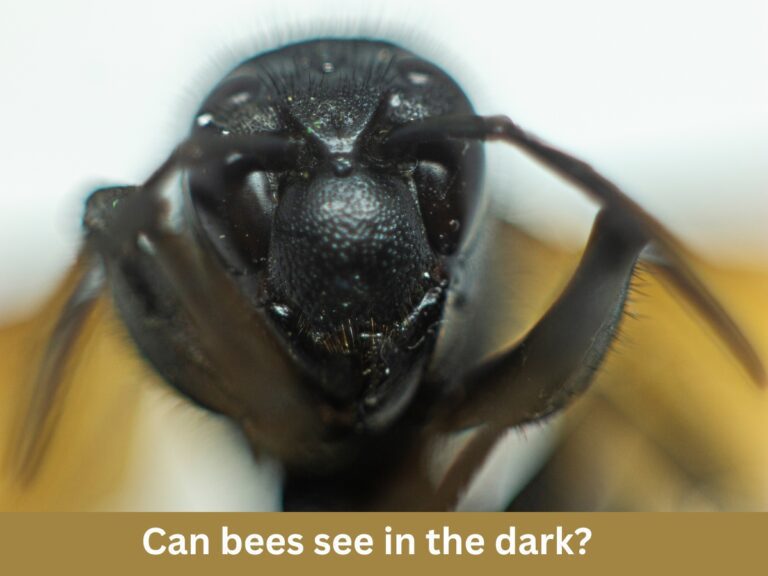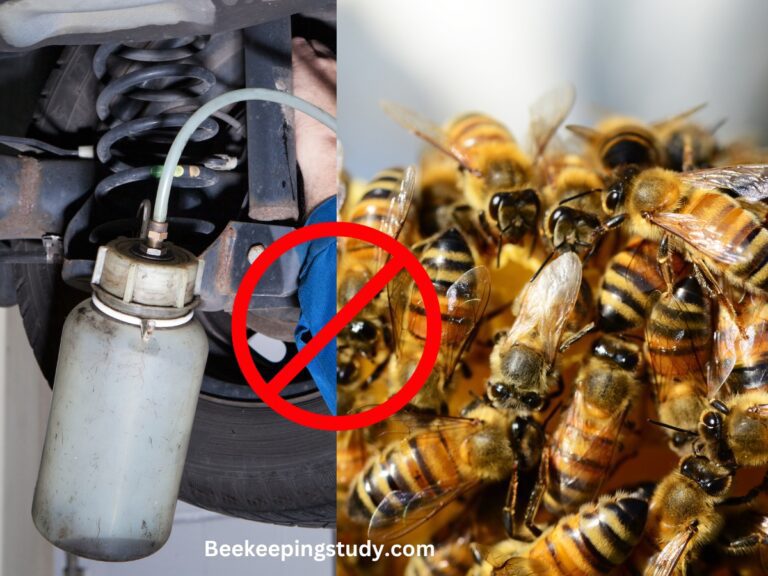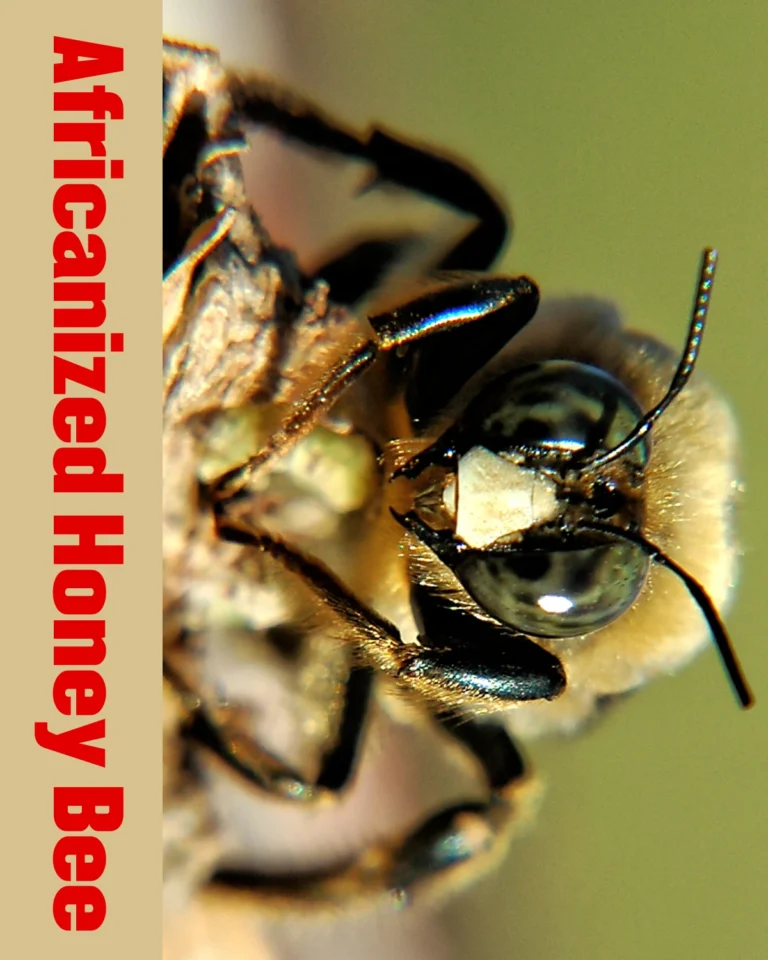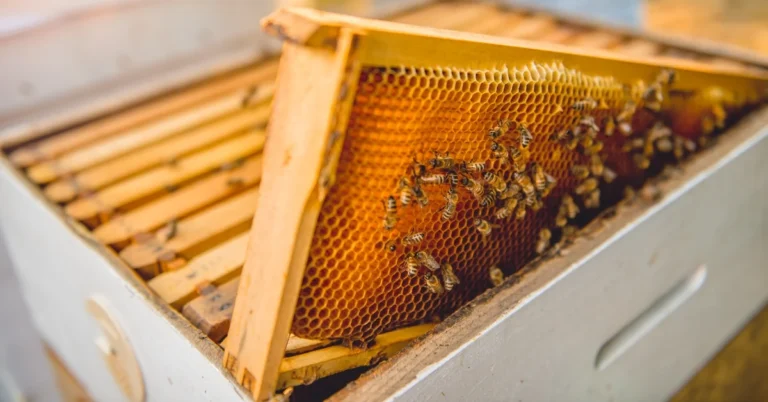Facts About Queen Bee (Beekeepers Must Know)
In the democratic honey bee colony, the queen is the prime minister of the entire society. She is the only reproducible woman in the entire colony. So, you can say she is the mother of that colony.
So, all drones, workers, and the future queen were also born from her. Not only she is producing the colony members but also she is the controller of all activities of the workers.
Proper knowledge about her role and other facts is crucial when learning about honey bee colonies. Every beekeeper must have proper knowledge about the queen.
Identifying a queen in the colony and taking proper care of her is the key to making a strong colony. So, let’s learn important facts and information related to the queen bee that you must know as a beekeeper.
What Does a Queen Bee Look Like
The queen bee is totally different than other workers, and drone bees in the colony. She is larger than other bees in a honey bee colony. She also looks more attractive than other bees in the colony.
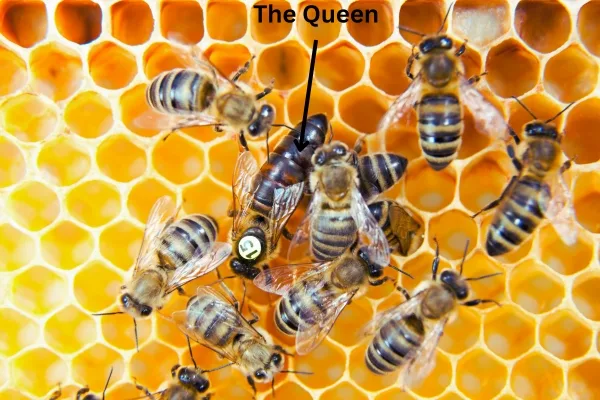
How Big is a Queen Bee
A virgin queen bee is usually 12 to 18 mm in size. On the other hand, a mated or matured queen bee is usually 15 to 22 mm in size.
The virgin queen is a little larger than the workers and smaller than the mature queen. The exact size of the queen varies depending on its species and the colony’s strength.
How to Identify Queen Bee in the Hive
By looking closely you can easily identify the queen in a colony. She is larger and brighter than the workers. You will also see a lot of nurse bees swinging around her. You will find her in any of the honeycomb cells in the brood box.
If you purchase a nuc you will find the queen came in a cage. In transferring Nuc to a beehive you have to be extra careful about the queen.
What Does the Queen Bee Do
As I already mentioned queen bee is the only reproducible person in the colony. So, she is the root of the entire colony.
From laying eggs to coordinating workers activities everything is performed by the queen. She divides the role of the workers. Which workers should work inside the hive and whom to send for foraging is decided by her.
Also, which bees will be scout bees and who to work as a nurse bee everything is decided by the queen. She is the head of the colony.
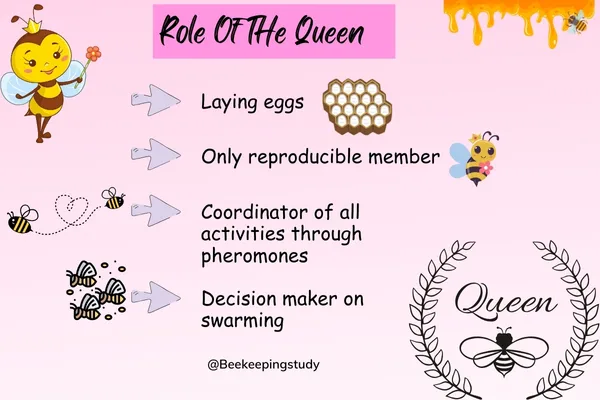
Queen Bee Role in the Hive
The queen bee has the following significant roles to run a honey bee colony.
- Laying Eggs: During mating season queen bee mates with drone bees. After returning to the hive she lays eggs in the brood cells. Then the future generation of the colony was produced.
- Release Pheromone: The queen bee releases pheromones from her body. This pheromone works as a coordinator of the entire colony. The role of each worker bee is decided by the pheromone released from the queen.
- Producing a New Queen: When the queen becomes old she needs to make a new queen for the future of the colony. So, she chooses some special brood cell and lays eggs on that cell. Among those cell workers choose their future queen and take special care of her.
- Power of Pheromone: When the workers go outside the hive for foraging, they can travel long distances. While returning to the hive they choose their path drawn to the hive according to the queen’s pheromone.
- Genetics: As the queen produces the entire colony the genetics of the future generation depend on the queen.
- Swarming: The Queen leads the entire swarm when they swarm to a new hive. She is the decider whether to live in the hive or not.
How Many Eggs Does a Queen Bee Lay Each Day
A queen bee can lay up to 1600 eggs per day. Depending on the swarm size and the strength of the queen, she can lay 600 to 1600 eggs each day.
She regulates the population of the colony by adjusting the egg-laying rates according to the colony’s length. When the colony needs large numbers of new members, the queen lays around 1500 eggs each day.
However, during overpopulation, the queen can lay only a few thousand eggs. She can also stay inside the hive for long periods without any mating flight, which occurs when there is no need for new members.
How is a Queen Bee Born
So far we have learned the role of the queen in the colony. Have you ever thought about how the queen bee was born?
Most of you may know the birth of the queen. But still, I am giving a straightforward overview of how the queen was born and developed.
The existing queen lays eggs in brood cells. Among those cells, workers create some special cells from which they will decide their future queen.
The queen lays eggs on those brood cells prepared by the worker. So, the birth of the queen is not different than other broods. But after the queen lays eggs the worker chooses one of those brood cells as their future queen.
So, they detach that brood from other broods and take special care of her. The queen feeds with royal jelly and workers provide special nursing for her.
When the new queen becomes an adult and ready to mate, either the old queen swarms away or is killed by the workers. Thus the new queen takes the entire reign of the colony.
How Long Does a Queen Bee Live
The queen of a honey bee colony can live up to 5 years. On average a queen bee has a 3 years of life span.
The lifespan of a queen honey bee depends on various factors. She can die early due to mite infection or getting attacked by predators.
In general, as soon as she is reproducible she will stay alive. She can also be killed by the worker when she gets rejected by the workers.
Queen Bee is the leader of the colony, but she is not the only decision-maker of the colony. If she becomes a dictator the workers won’t tolerate her. So, they will protest against her.
The result will be either the worker will kill the queen and decide on a new queen. Alternatively, the queen will be banished from the colony.
What Happens When a Queen Bee Dies
No honey bee colony can survive long without a queen. So, if the queen bee dies no matter how a new queen should be made. Otherwise, the entire colony will die very soon.

There is no way for a honey bee colony to survive long without a queen. Thus when a queen bee dies there must be a new queen replacing her place in the colony.
What Happens if You Kill a Queen Bee
For the welfare of the colony sometimes the beekeeper needs to kill a queen bee. So, if you kill a queen bee, you must requeen the queenless hive as soon as possible.
First, the worker will try to produce a new queen from existing larvae. If they failed you must help them by introducing a new queen to the colony.
Because if they don’t find a new queen within a few days they will become aggressive. The colony will start dying slowly. As a result, you might lose the entire colony.
The absence of the queen also increases the chance of getting robbed by other colonies. So, you shouldn’t leave the colony without the presence of a queen.
When Does the Queen Bee Leave the Hive
The queen bee leaves the hive when she gets rejected by the workers. She also swarms away with a portion of the colony when the hive becomes overpopulated.
During the swarming season, the hive may become overpopulated. So, there is a high chance that the queen will swarm away with a portion or with the entire colony.
So, you have to be extra careful during swarm season. If the hive becomes overpopulated you have to split the hive into 2 or more hives. Otherwise, it is not surprising that the colony abandoned the hive and swarms away.
What to Do if a Queen Bee Dies or Leaves the Hive?
Whether the queen bee dies or leaves the hive you have to introduce a new queen to the hive. So, you can do the following.
- Check for larvae or eggs present in the brood box or not. If exists worker will try to produce a new queen from the existing eggs and larvae.
- If you don’t see any eggs or larvae you must buy a new queen and introduce her to the hive.
- You can also split the queenless hive and merge with other hives with an existing queen.
Where to Buy a Queen Bee
If you need to purchase a queen bee for your queen-less hive first contact beekeepers in your region. Try to get a queen from their colony. Most beekeepers rear extra queens inside a beehive for selling purposes.
So, try to manage a queen from your local beekeepers. If you fail then look for online beekeeping suppliers. You obviously will be able to purchase a queen.
Make sure to get the queen in a cage and introduce her carefully in the queenless hive.
How To Attract A Queen To A Bee Hive
If you are thinking of requeen a hive by attracting a queen from other colonies, I have to say it is impossible. No queen from one colony will get attracted to any other colony.
In case you are using a swarm trap to catch a swarm of bees, you can try some methods to attract the queen. Because if the queen of a swarm nearby gets attracted to the trap, the chance of catching that swarm becomes maximum.
So, to attract a queen to a swarm trap make sure to make the trap attractive. Use attractive swarm lures such as lemongrass oil and other types of essential oils.
This will be attractive to the queen and the scout bees. So, your chance of getting bees in the trap will be increased by this way.
Frequently Asked Questions
Who mates with the queen bee?
Drone bees participate in the mating session with the queen. The drone has nothing to do except mating with the queen in their entire life. The drone mates with the queen and dies instantly after mating.
What do queen bumble bee look like?
The queen bumble bee is larger than the worker and drone bees of the colony. She is 20 to 22 mm large in size. She has a robust and rounded body with a fuzzy or hairy appearance. The hairs on her body are usually longer and denser compared to worker bees.
Can a honey bee colony survive without the queen?
The pheromone released by the queen coordinates all the activities of the colony. Without her, there will be chaos within workers. Also, there will be no future generation. Thus honey bee colony won't survive long without the colony.
Final Thoughts
So far, we reached the conclusion part about the queen bee. You can understand how important the queen bee is for the entire colony. If there is no queen there won’t be any honey bee colony.
The strength of the colony mostly depends on the strength of the queen. Thus beekeepers have to be extra careful about the queen of the colony.

